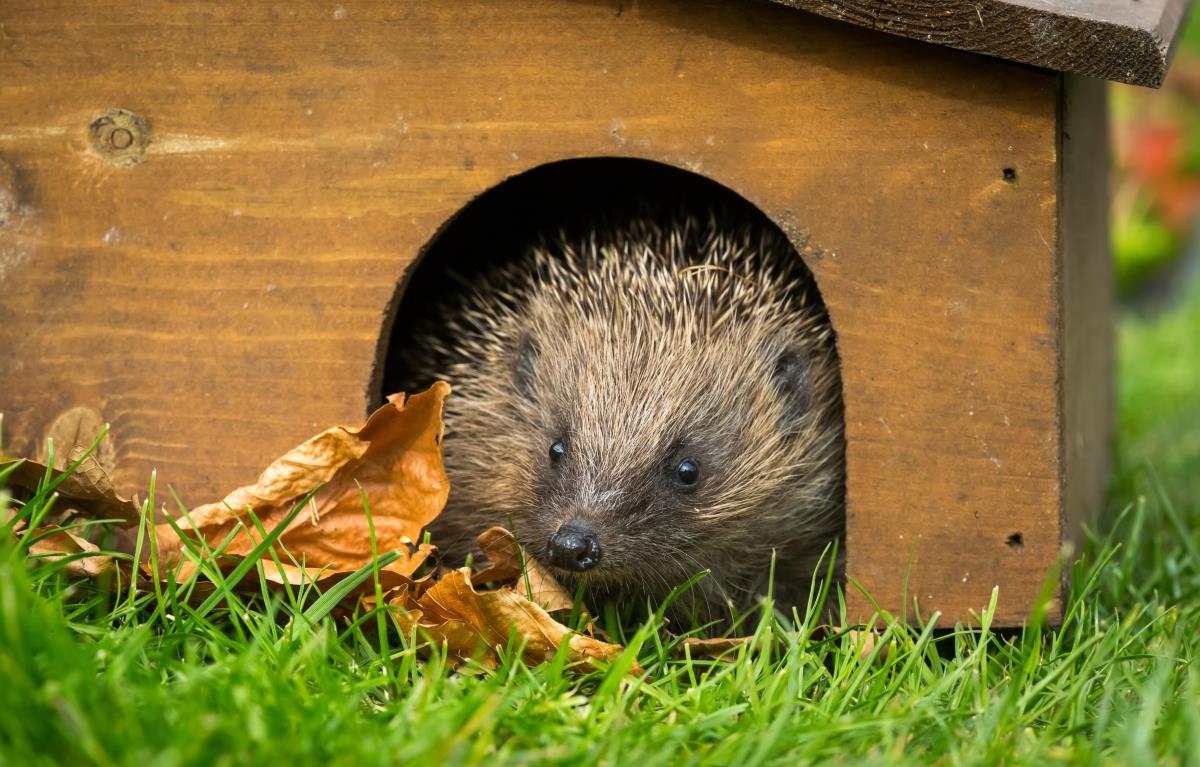Making a Hedgehog Home
From Mrs Tiggywinkle to Sonic, hedgehogs are much loved creatures that, despite their prickly exteriors, are often seen as small and cute.
And the truth is they are rather great! These nocturnal crawlers love to forage in our gardens and hedgerows and their diet makes them welcome visitors as they feed on slugs, snails and insects.
They can live anywhere with plenty of undergrowth to conceal themselves but, the decrease of countryside means their habitat is often threatened and they simply don’t have as many places to live.
To help our spiky friends, here’s a guide to creating a hedgehog home in your garden, as well tips on how to help improve hedgehog wellbeing.
Easy Hedgehog Home
There are many options for creating somewhere cosy for hedgehogs. This easy method from the Natural History Museum doesn’t require any expensive tools and can be built with your child’s help.
You will need:
- - 30 bricks
- - Sheet of wood or large paving slab
- - Small logs
- - A spade or trowel
- - Dried leaves
- - Gardening glove
- - Dried leaves
- - Gardening gloves
1. Choose a flat, shady area of your garden close to the fence if possible
2. Put on your gardening gloves!
3. Dig a square hole about 7cm deep and 50 cm wide. Your child can help using a small garden trowel
4. Help your child gather dead plant material such as leaves, bark and small twigs that have fallen to the ground
5. Scatter the plant material into the hole to make a cushioned bed for the hedgehogs
6. Place bricks around the outside of the hole, creating a small tunnel on one side for an entrance. Ensure the entrance is big enough for a hedgehog but small enough to prevent cats, badgers and other predators from getting inside
7. Place two more layers of bricks on top of the first layer, overlapping them to make the home sturdy
8. Put the sheet of wood or paving slab on top to act as a roof
9. Lay the logs on top of the roof to weigh it down
10. Let your child lay more twigs, leaves and branches around the walls of the home. This helps to camouflage the house and encourages insects, which are a tasty food for hedgehogs
Bricks can be bought if necessary, but ask around and you may find some you can recycle.
Compost heaps and log piles can also be great places for hedgehogs to make their home, so long as they are not disturbed.
If you are good at DIY and have the right tools, check out the RSPB’s wooden hedgehog home.
Five Prickly Facts - Did you know?
- A baby hedgehog is called a ‘hoglet’
- Hedgehogs have weak eyesight, so rely on their sense of smell and hearing to get around
- Hedgehogs are lactose intolerant – so milk should never be left out for them!
- When hedgehogs go foraging in the evening, they can travel up to 2 miles
- A group of hedgehogs is called an ‘array’
Hedgehog Food
Along with their diet of creepy crawlies, hedgehogs will also enjoy meat-based cat or dog food, cat biscuits and specially made hedgehog food.
Autumn is the best time to offer hedgehogs a helping hand as they are trying to build up their fat reserves before hibernating through the winter.
Don’t feed them milk or bread – as this has very little nutritional value. Mealworms are also thought to create health problems when eaten in large quantities, so leave them to the insects they can find on their own.
Further reading and sources:
More support for hedgehogs
There are lots of local hedgehog preservation societies, so if you find a sick or injured hedgehog, do contact your nearest one for help. More general support can be found on these sites:




